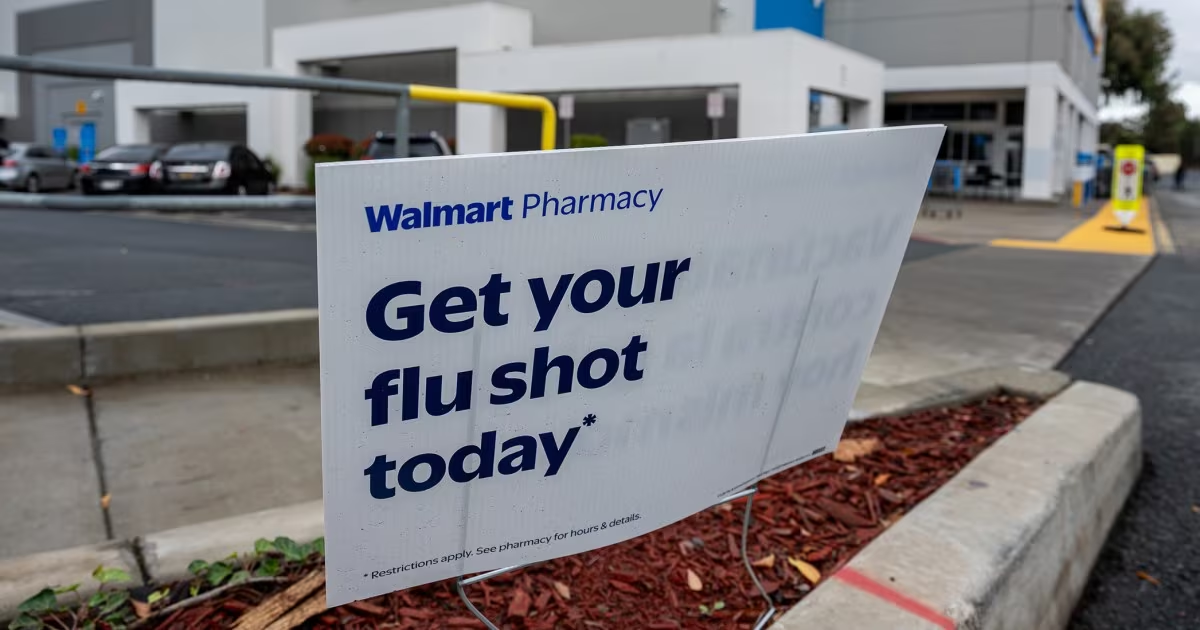Public Health Warning: Why the 2024-2025 Flu Season Demands Immediate Action
The 2024-2025 influenza season has begun earlier than usual in several regions across the United States, prompting healthcare providers nationwide to issue a high alert. This premature activity has raised significant concerns among public health experts, who fear a rapid escalation in cases as millions of Americans prepare to travel and gather for major winter holidays, including Thanksgiving and Christmas.
Typically, flu activity peaks in January or February. However, the early onset observed this year suggests that the season could be both longer and potentially more severe, placing substantial strain on hospitals already managing other respiratory illnesses like RSV and COVID-19.
This situation demands immediate public awareness and action. Doctors are stressing that the window for effective protection is closing, emphasizing that vaccination now is the single most critical step individuals can take to protect themselves and their communities before the peak transmission period begins.
The Looming Threat of Holiday Transmission
The primary driver for the current high alert is the confluence of early viral spread and the impending holiday travel surge. The Centers for Disease Control and Prevention (CDC) consistently monitors flu activity, and the data indicating an early rise is a clear signal of potential trouble.
Why Travel and Gatherings Increase Risk
When large numbers of people travel, whether by air, train, or car, they increase their exposure risk. Furthermore, traditional holiday gatherings, often held indoors with poor ventilation, create ideal environments for the influenza virus to spread efficiently.
Key Risk Factors During the Holidays:
- Increased Density: Crowded airports, bus stations, and public transport facilitate close contact with infected individuals.
- Indoor Gatherings: Spending extended time indoors with family and friends, particularly those traveling from different geographical areas, increases the likelihood of transmission.
- Delayed Symptoms: People can be contagious before they show symptoms, meaning seemingly healthy travelers can unknowingly spread the virus.

“We are urging the public not to wait. The early activity we are seeing is a clear warning sign that the virus is circulating aggressively. Waiting until December or January to get vaccinated may be too late to prevent illness during the worst of the season,” stated one public health official, reflecting the widespread concern among medical professionals.
The Critical Role of Vaccination Timing
For the public, the most important takeaway from this early alert is the urgency of vaccination. The flu shot remains the most effective tool for preventing severe illness, hospitalization, and death associated with influenza.
Understanding the Two-Week Immunity Window
It is crucial to remember that the flu vaccine does not provide immediate protection. It takes approximately two weeks for the body to develop the necessary antibodies after receiving the shot. Given the early start to the season and the approaching holidays, time is of the essence.
Actionable Advice for Protection:
- Get Vaccinated Now: The CDC recommends that everyone six months of age and older receive the flu vaccine. Prioritizing vaccination in October and November ensures maximum protection before the holiday travel peaks.
- Consult Your Doctor: High-risk groups, including young children, adults over 65, pregnant women, and those with chronic health conditions, should consult their healthcare provider immediately.
- Consider Co-Administration: The flu shot can often be administered at the same time as the updated COVID-19 vaccine or the RSV vaccine (for eligible groups), simplifying the process of obtaining comprehensive respiratory protection.

Vaccine Composition and Effectiveness
Each year, the flu vaccine is formulated to protect against the strains predicted to be most common. Public health experts have confidence in the current season’s formulation, which is designed to target the dominant circulating influenza A and B viruses. While the vaccine may not prevent every infection, it is highly effective at reducing the severity of illness, which is vital for preventing hospital overcrowding.
Healthcare System Preparedness and Mitigation Strategies
Healthcare systems are responding to the high alert by implementing preparedness measures designed to handle a potential surge in patients.
Hospital Capacity and Staffing
One of the primary concerns is the potential for “tripledemic” conditions, where high levels of flu, RSV, and COVID-19 simultaneously strain hospital resources. Providers are focusing on:
- Inventory Management: Ensuring adequate supplies of antiviral medications (like Tamiflu) and personal protective equipment (PPE).
- Surge Planning: Developing protocols for expanding bed capacity and optimizing staffing levels to manage increased patient volume in emergency departments and intensive care units.
- Testing Accessibility: Increasing the availability of rapid and accurate diagnostic tests to distinguish between the various respiratory illnesses, allowing for appropriate treatment.
Antiviral drugs are a crucial secondary defense, particularly for individuals who contract the flu and are at high risk for complications. These medications can shorten the duration of illness and reduce the risk of severe outcomes, but they are most effective when started within 48 hours of symptom onset. Doctors are advising patients to seek testing and treatment quickly if flu symptoms appear.
Key Takeaways for Public Safety
To navigate the early and potentially challenging 2024-2025 flu season safely, the public should adhere to these essential guidelines:
- Urgent Vaccination: Get the flu shot immediately to achieve full immunity before holiday travel and gatherings begin.
- Practice Hygiene: Maintain rigorous hand hygiene, cover coughs and sneezes, and avoid touching your face.
- Stay Home When Sick: If you experience flu-like symptoms (fever, body aches, sore throat), stay home and avoid contact with others to prevent further spread.
- Masking Consideration: Consider wearing a high-quality mask (N95 or KN95) in crowded indoor settings, such as airports, especially if you are in a high-risk category.
- Monitor Symptoms: Be aware of severe symptoms (difficulty breathing, persistent chest pain) that require immediate medical attention.
Conclusion: Prioritizing Health Through the Winter
The early start of the 2024-2025 flu season serves as a critical reminder that respiratory viruses remain a major public health challenge. By heeding the warnings from doctors and public health experts, particularly regarding the urgency of vaccination, the public can significantly mitigate the risk of widespread illness during the busy holiday period. The goal is not only to protect individual health but also to preserve the capacity of the healthcare system to care for those who become severely ill.
Preparedness now is the best defense against a difficult winter.
Original author: Erika Edwards, Kaan Ozcan
Originally published: November 24, 2025
Editorial note: Our team reviewed and enhanced this coverage with AI-assisted tools and human editing to add helpful context while preserving verified facts and quotations from the original source.
We encourage you to consult the publisher above for the complete report and to reach out if you spot inaccuracies or compliance concerns.

